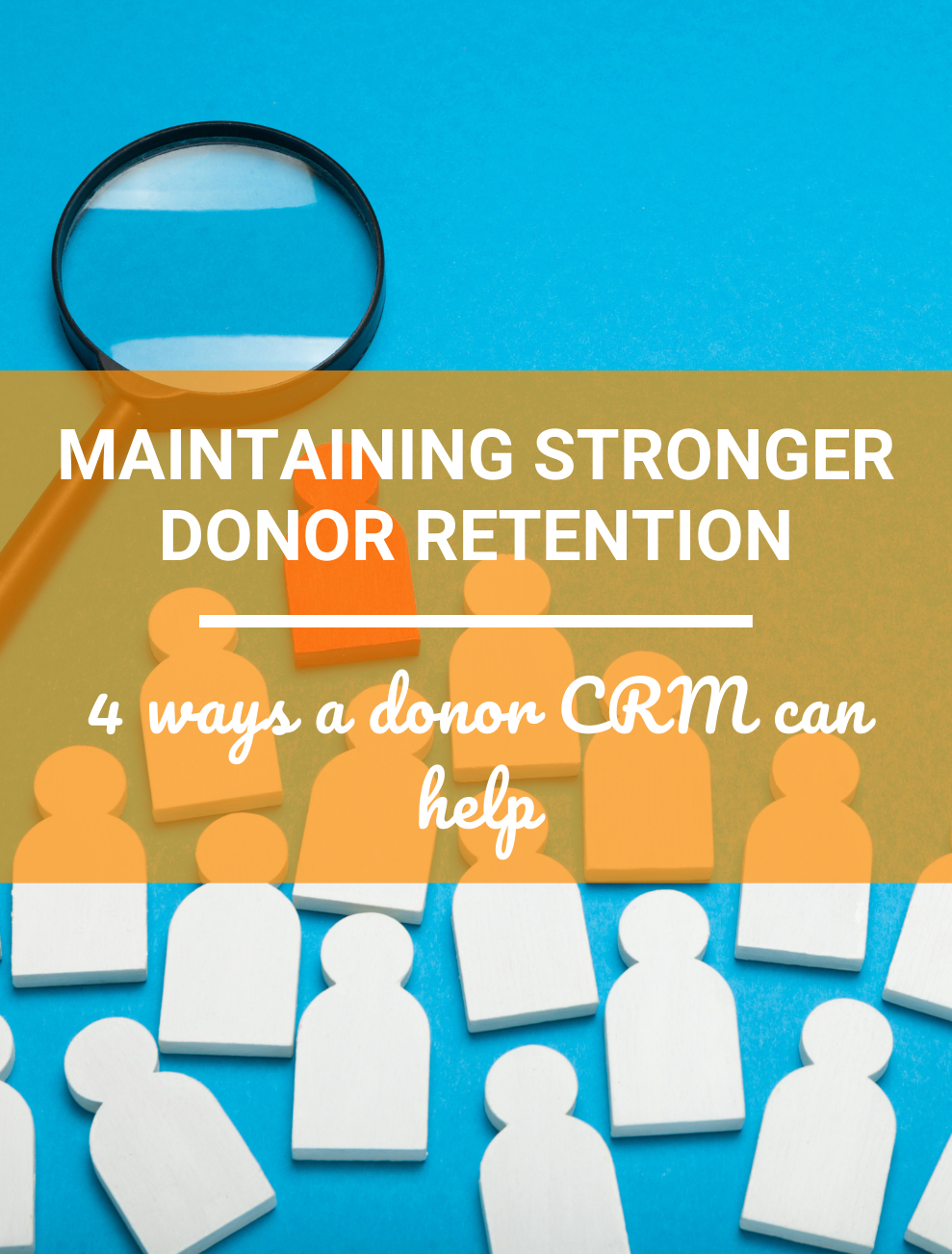Maintaining stronger donor retention
4 ways a donor CRM can help
Creating strategic touchpoints throughout the year between your nonprofit and your donors (or prospects) is an important part of the fundraising process. As we know, the best way to accomplish donor retention is by building strong relationships with them. And with an ever-growing list, how do you keep track of all of this information?
Today, we’re giving you a shortlist of ideas to build stronger donor retention systems with a CRM.
How a donor CRM supports stronger donor retention: 4 ideas for your nonprofit
Implementing a CRM (constituent relationship management) tool provides you with an easy way to keep track of your donors and to establish roles, protocols, and systematic ways to continue communicating with key prospects year-round. In general, use your CRM on a regular basis to track all donor and constituent touchpoints. Doing so will give you an easy-to-access history of everyone with that system.
Consider these four ways that a donor CRM can improve your fundraising game:
- Story collecting. As with all relationships, the more you talk with your donors, the more you learn about them. They may share stories of their experiences with your organization, a special interaction with a staff member, or a general anecdote by which you both connect. Track this information in your CRM to keep these talking points top of mind.
- Acknowledgment of gifts. This is probably the easiest part of a CRM—tracking the donations that come in online (and offline). Most CRMs will link automatically to your online donation pages. And, when you receive donations in the mail, be sure you’ve established a process for entering those in a timely manner into your CRM. Thank-you letters, cards, emails, and acknowledgments can then be triggered automatically based on gift type and method received.
- Analyzing prospects. A great use of a donor CRM is to add custom fields or pull reports that outline specific actions (or inactions) of your donors in order to create follow-up procedures. For example, you can pull reports based on those who gave two years ago but not this year, lapsed donors in other timeframes, or even who has a special anniversary or birthday coming up. Think about the information that makes most sense to track and then use that information regularly to build your relationships with donors.
- Team segmenting. Don’t tackle fundraising for your nonprofit on your own; get your whole team involved. Divvy up tasks and follow-up communications between team members. Set up weekly meetings or quick check-ins to share which donors have been contacted the week prior, looming prospects, or general accomplishments made related to donor communications and fundraising. Pull reports from your CRM to support these conversations and task assignments. Even if you are a one-person department, there are ways in which you can utilize volunteers or your board to help with key tasks, communication, and follow-up that then gets tracked in your CRM.
Review your donor retention program throughout the year. List out what is working well and what can be improved. Get into the habit of entering all donor touchpoints into your CRM and use the data within to make decisions on a shift in plan or focus moving forward. Using a simple fundraising CRM is a great way to increase dollars raised year after year.
Happy cultivating!
– Your friends at NonprofitLibrary
P.S. Save the date for our upcoming webinar with Ronald Pruitt from 4aGoodCause on February 3rd to learn more about how implementing a CRM can also ensure you keep more of what you raise!
